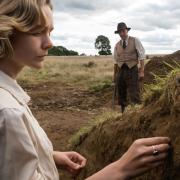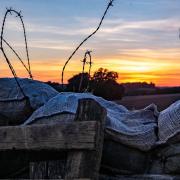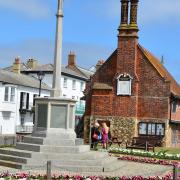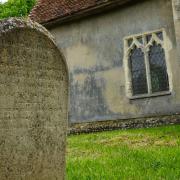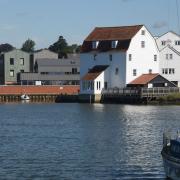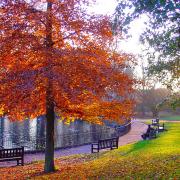Lindsay Want’s monthly indulgence in tucked away stuff that’s simply oh-so-Suffolk

If you’re into royal bits and pieces, then head down to St Mary’s Church in Erwarton on the Shotley Peninsula. Be strict though. Don’t dally by the redbrick folly-of-a-gateway by the neighbouring Tudor hall. Don’t linger too long with that right royal view from the churchyard bench, out across the shimmering Stour towards Harwich. Step inside and take a seat by the organ. Slowly the significance will sink in.
The young face of Anne Boleyn peers over the neatly stitched Jubilee kneeler propped up on the pew rail. It seems she left her heart here, even though she parted from her head in the Tower of London on husband Henry VIII’s bidding. As a child she was a regular visitor to Erwarton Hall, so the lead casket full of black dust found here in 1836 could have been her vital organ. Resealed, it was laid back to rest in the Lady Chapel vault, now beneath the pipes and keyboard.
Other Suffolk churches laying claim to remnants of royal entrails include Westhorpe north of Stowmarket, said to hold Mary Tudor’s heart, and Yoxford, which boasts Lady Katherine Grey’s left over bits. Sister to the Nine Day Queen, Lady Jane Grey, Katherine lived her final years at Yoxford’s Cockfield Hall, where the owner, the then Lieutenant of the Tower of London, could keep an eye on her for Elizabeth I. Embalmed on her death in 1621, HER body and ‘bits’ were buried at St Peter’s. She was later moved to Salisbury Cathedral, leaving her entrails behind her.

From Suffolk to the Throne
In 1553, newly proclaimed Queen Mary gathered a loyal army of thousands at Framlingham Castle and set out with her colourful cavalcade for London, to lay claim to the throne. There’s more about the royal route at the nearby Woodland Trust site, Pound Farm near Cransford.
Sign of the times

Anne of Cleves House in Haverhill is a rare half-timbered survivor of the 1660s fires which devastated the town. Built in 1540, it was part of Henry VIII’s settlement when he divorced his fourth wife after just six months of marriage. At least she kept her head, unlike the unfortunate monarch, Charles I. He’s unusually remembered in the tiny village of Shelland near Woolpit, where you’ll find one of England’s six churches dedicated to ‘King Charles the Martyr’.
Museum must-sees
Newmarket owes much to Charles II who made it home to ‘the Sport of Kings’ and even won the Town Plate in 1671. Find out all about it at the National Horseracing Museum. Currently on the Newmarket High Street in the former Jockey Club subscription rooms, it’s packed with well-thought out galleries including paintings and trophies, bringing both racing history and heroes to life. You can even have a go by donning some silks and speeding off on the racehorse simulator.
Open throughout the year. Visit www.nhrm.co.uk or call 01638 667333 for exact times and admission prices.
Historic Palace House (below) – the only surviving part of Charles II’s Newmarket residence - will be the museum’s new home from 2016 as part of the major National Heritage Centre for Horseracing and Sporting Art. With development under way, a horse skeleton has been unearthed in the neighbouring Rothschild Yard. Could this be Old Rowley, Charles’ trusty steed from whom the famous Rowley Mile Race Course now takes its name? Find out more at www.nhrm.co.uk/new_site_news.aspx




